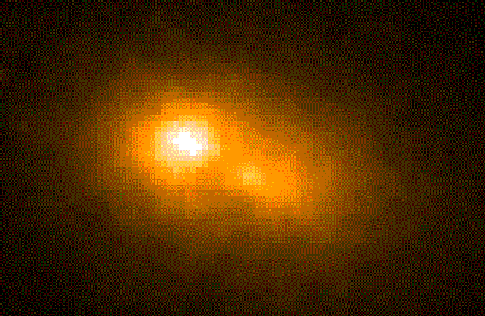Explanation: The center of M31 is twice as unusual as previously thought. In 1991 the Planetary Camera then onboard the Hubble Space Telescope pointed toward the center of our Milky Way's closest major galactic neighbor: Andromeda (M31). To everyone's surprise, M31's nucleus showed a double structure. The nuclear hot-spots are quite close together when considering Galactic distances: M31 is about 150,000 light years across while the above shows only the central 30 light-years. Subsequent ground-based observations have led to speculation that indeed two nuclei exist, are moving with respect to each other, that one nucleus is slowly tidally disrupting the other, and that one nucleus may be the remains of smaller galaxy "eaten" by M31. The nuclei of many galaxies, including M31, are known to be quite violent places, and the existence of massive black holes are frequently postulated to explain them.
1999 2000 2001 2002 2003 2004 2005 2006 2007 2008 2009 2010 2011 2012 2013 2014 2015 2016 2017 2018 2019 2020 2021 2022 2023 2024 2025 |
Yanvar' Fevral' Mart Aprel' Mai Iyun' Iyul' Avgust Sentyabr' Oktyabr' Noyabr' Dekabr' |
NASA Web Site Statements, Warnings, and Disclaimers
NASA Official: Jay Norris. Specific rights apply.
A service of: LHEA at NASA / GSFC
& Michigan Tech. U.
|
Publikacii s klyuchevymi slovami:
Yadra galaktik - chernye dyry - Andromeda
Publikacii so slovami: Yadra galaktik - chernye dyry - Andromeda | |
Sm. takzhe:
Vse publikacii na tu zhe temu >> | |
